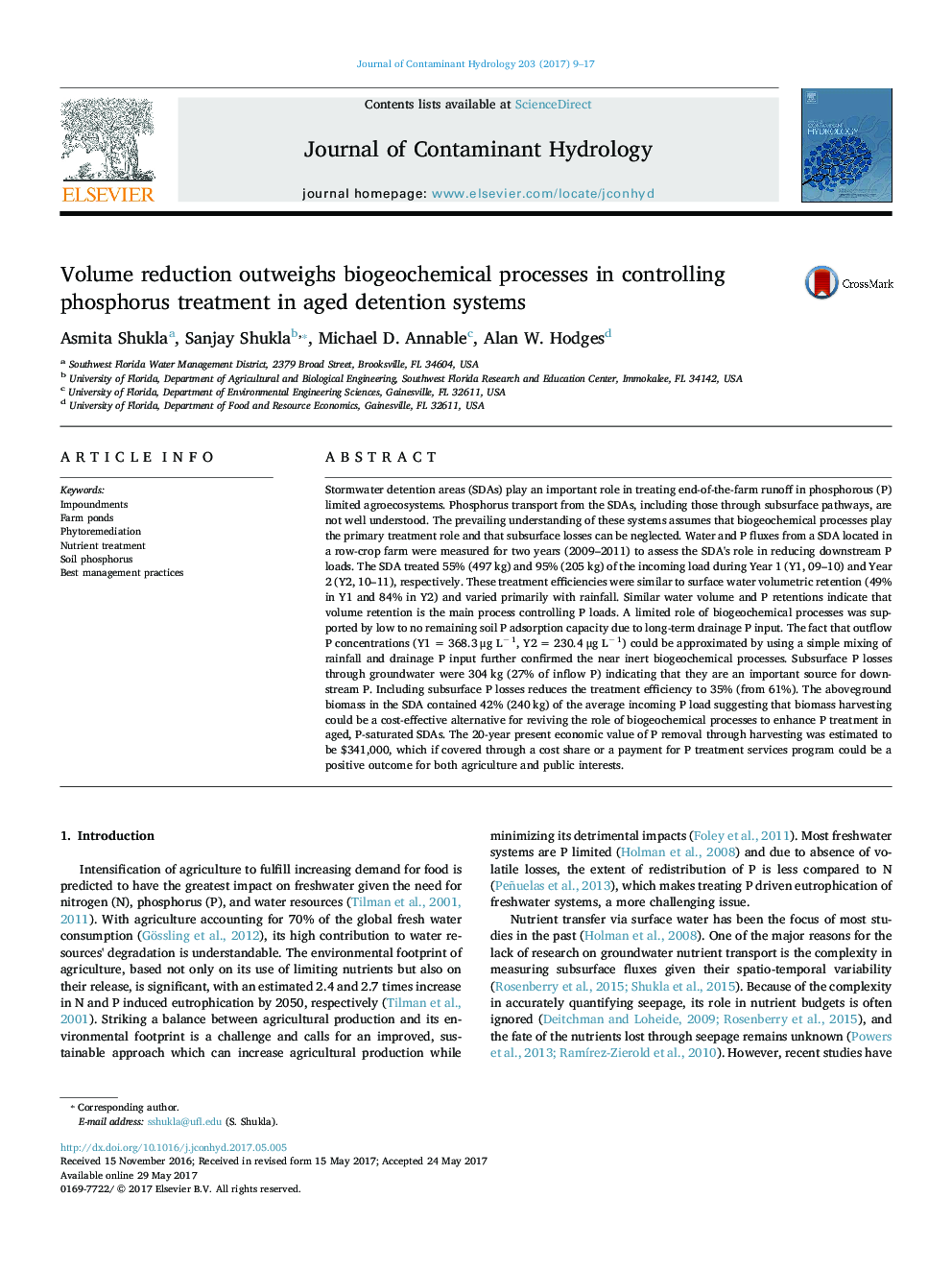| کد مقاله | کد نشریه | سال انتشار | مقاله انگلیسی | نسخه تمام متن |
|---|---|---|---|---|
| 5765851 | 1627008 | 2017 | 9 صفحه PDF | دانلود رایگان |
- P treatment in aged SDAs is derived mainly from volume reduction.
- Soil adsorption does not control P treatment due to P saturation.
- P lost through subsurface pathways is a significant source of downstream P.
- Hydraulic modifications achieve short-term enhanced P treatment but a flood risk assessment is needed.
- Biomass harvesting can potentially enhance long-term P treatment without any prospective risks.
Stormwater detention areas (SDAs) play an important role in treating end-of-the-farm runoff in phosphorous (P) limited agroecosystems. Phosphorus transport from the SDAs, including those through subsurface pathways, are not well understood. The prevailing understanding of these systems assumes that biogeochemical processes play the primary treatment role and that subsurface losses can be neglected. Water and P fluxes from a SDA located in a row-crop farm were measured for two years (2009-2011) to assess the SDA's role in reducing downstream P loads. The SDA treated 55% (497 kg) and 95% (205 kg) of the incoming load during Year 1 (Y1, 09-10) and Year 2 (Y2, 10-11), respectively. These treatment efficiencies were similar to surface water volumetric retention (49% in Y1 and 84% in Y2) and varied primarily with rainfall. Similar water volume and P retentions indicate that volume retention is the main process controlling P loads. A limited role of biogeochemical processes was supported by low to no remaining soil P adsorption capacity due to long-term drainage P input. The fact that outflow P concentrations (Y1 = 368.3 μg Lâ 1, Y2 = 230.4 μg Lâ 1) could be approximated by using a simple mixing of rainfall and drainage P input further confirmed the near inert biogeochemical processes. Subsurface P losses through groundwater were 304 kg (27% of inflow P) indicating that they are an important source for downstream P. Including subsurface P losses reduces the treatment efficiency to 35% (from 61%). The aboveground biomass in the SDA contained 42% (240 kg) of the average incoming P load suggesting that biomass harvesting could be a cost-effective alternative for reviving the role of biogeochemical processes to enhance P treatment in aged, P-saturated SDAs. The 20-year present economic value of P removal through harvesting was estimated to be $341,000, which if covered through a cost share or a payment for P treatment services program could be a positive outcome for both agriculture and public interests.
Journal: Journal of Contaminant Hydrology - Volume 203, August 2017, Pages 9-17
